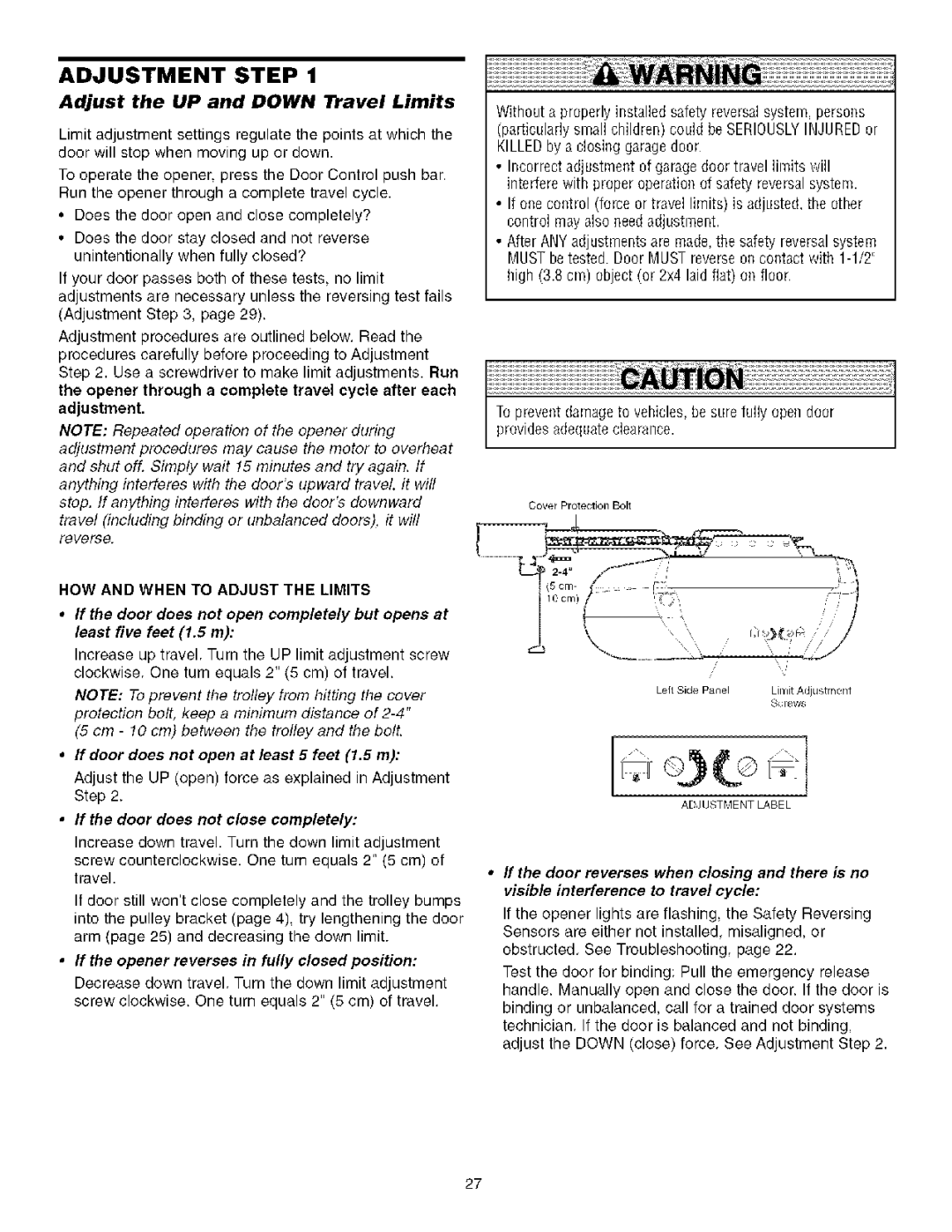139.53930D specifications
The Sears 139.53930D is a sophisticated and reliable garage door opener that has made a significant mark in the world of home automation. With its innovative design and advanced features, this model stands out in the crowded marketplace of garage door systems.One of the defining characteristics of the 139.53930D is its powerful motor. The opener is equipped with a robust 1/2 horsepower motor, providing ample lifting power for a variety of garage door sizes and weights. This ensures smooth and efficient operation, allowing homeowners to go about their daily routines without the worry of a sluggish or malfunctioning door.
Another key feature of the 139.53930D is its safety and security enhancements. The unit comes with a complete set of safety sensors that can detect objects in the door's path, stopping the door from closing if an obstruction is detected. This ensures added safety for children and pets, an essential consideration for any family. Additionally, the model incorporates a rolling code technology that generates a new access code every time the remote is used. This significantly reduces the risk of unauthorized access, giving homeowners peace of mind.
The installation process has also been made simpler with this model's user-friendly design. The package includes detailed instructions and all necessary hardware, making it accessible for both professional installers and DIY enthusiasts. The opener is compatible with various garage door sizes, accommodating most standard installations, which boosts its versatility.
Moreover, the Sears 139.53930D supports multiple forms of remote access. It comes with two streamlined remotes that make it easy to open and close the garage from a distance. For added convenience, the system is compatible with Smart Home technology, allowing users to control the door via smartphone apps or smart home systems. This level of integration is becoming increasingly popular, providing an additional layer of convenience for modern households.
In conclusion, the Sears 139.53930D delivers a robust and secure solution for garage door automation. With its powerful motor, advanced safety features, easy installation, and compatibility with smart technology, it represents a formidable choice for homeowners looking to enhance their garage door system. As the trend towards home automation continues to grow, this model stands out as a reliable and efficient option.

